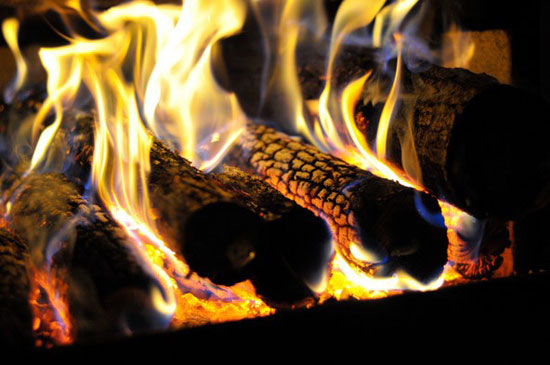Wood-burning fireplaces feel the heat
November 30, 2011
Chestnuts roasting on an open fire? Better check your woodpile and your air quality.
Amid concerns about agricultural pests and air pollution in Southern California, state and local authorities have been paying closer attention this year to wood-burning fireplaces, one the most fragrant, but environmentally vexing, aspects of winter in L.A.
For instance, the Southern California Air Quality Management District will begin issuing mandatory “no burn” advisories through the end of February on days in which fine particulates in the area exceed federal health standards. Though the advisories are expected to be rare, and first-time offenders can get off the hook by taking a smoke-awareness course, fireplace owners who repeatedly light fires on those days can be fined up to $500.
“Fine particulates are not only bad for the environment, but bad for our health,” says AQMD spokeswoman Tina Cherry. “They can lodge deep in your lungs and exacerbate lung conditions and asthma. So this year, on days when the fine particulate levels reach 35 micrograms per cubic meter, we’re asking people not to burn wood.”
State and agricultural authorities, meanwhile, have been urging residents with wood-burning fireplaces to “buy it where you burn it” when it comes to firewood because so many invasive insect pests and diseases are transported in woodpiles.
“Right now, there’s a quarantine in San Diego County because of a pest called the Goldspotted oak borer, which spreads via wood and is a real threat to oak trees,” says Frank McDonough, botanical information consultant at the Los Angeles County Arboretum & Botanic Garden.
“But you have to be careful even in areas without quarantines.”
The measures and warnings seek to wean Southern Californians from the wood fires that are such a tradition this time of year. To many, one of the coziest aspects of winter is the smell of a eucalyptus or oak log in the hearth, burning down to embers, but the fires that perfume winter nights with that smoky aroma also spew about 5.5 tons of particulate matter a day, on average, into the region’s air, according to the AQMD.
The new “no-burn” mandates are the latest in a set of measures aimed at controlling that pollution. Wood-burning fireplaces and stoves have been banned in new developments since 2009 in California, and voluntary no-burn days were initiated last year.
Although AQMD data has indicated that curtailment conditions can occur as often as 15 times in a typical winter, only one voluntary no-burn advisory was issued in 2010-11, and that was in February in the Riverside area, Cherry says.
This year’s mandatory no-burn laws will run from November 1 until February 29, and the AQMD will issue residential wood-burning advisories to let the public know whether particulate levels are elevated.
Residents can call a “Check Before You Burn” hotline at (866) 966-3293 to find out whether an advisory has been issued, or click here to sign up for an online notification. An interactive no-burn advisory map, which allows users to check for advisories by entering a ZIP code in the search area, is also available here.
Posted 11/30/11













 405 bridge work causes a stink
405 bridge work causes a stink
